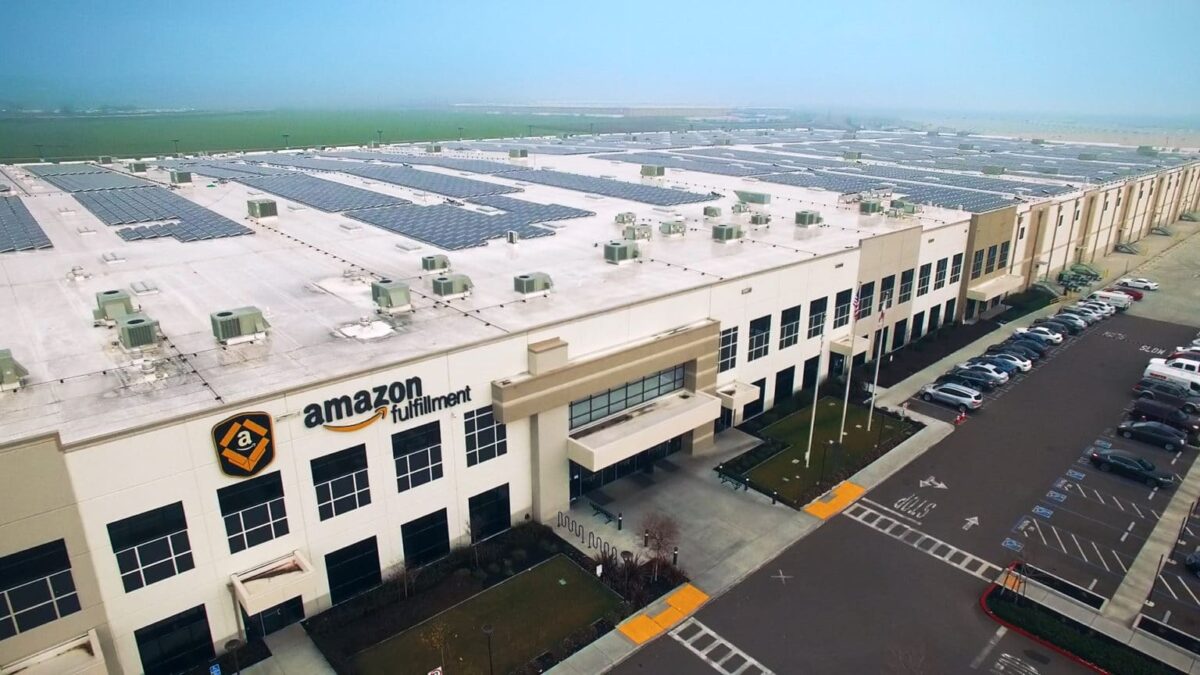 Amazon set a goal in 2019 to match all of the electricity consumed in its global operations with 100% renewable energy by 2030. The company announced recently that it achieved this target in 2023, seven years ahead of schedule.
Amazon set a goal in 2019 to match all of the electricity consumed in its global operations with 100% renewable energy by 2030. The company announced recently that it achieved this target in 2023, seven years ahead of schedule.To be clear – Amazon is not a carbon emissions-free enterprise. The retail giant uses gas-powered trucking and flies commercial jets. Some of its data centers are operated on electric grids that are still heavily fossil fuel based.
In many cases, Amazon matches its electricity demand by investing in Renewable Energy Credits (RECs), documents that represent a financial investment in off-site renewable energy capacity. RECs are a common pathway for corporations pursuing clean energy procurement goals. However, RECs have been shown to have a limited impact on increased renewable energy production.
Nevertheless, Amazon has invested billions of dollars in more than 500 solar and wind projects globally, which together produce the equivalent of roughly 7.6 million U.S. homes. And, it has set a pledge to be net-zero carbon emissions by 2040, which would include decarbonized transportation and logistics, which is no easy task. While a REC-based achievement of this target would make nice headlines, a true direct decarbonization of Amazon’s own operations will take time.
“We’ve known from the start that our path to net zero would have many obstacles and need to be adjusted for changes to both our business and the world. Nevertheless, as with all of our long-term goals, we remain optimistic and focused on achieving them,” said Amazon in a press release.
In total, Amazon’s renewable energy portfolio will help avoid an estimated 27.8 million tons of carbon per year once all projects are operational.
In addition to investment in utility-scale projects, the company has also enabled almost 300 on-site solar projects on the rooftops and properties of Amazon fulfillment centers, Whole Foods Market stores, and other corporate buildings around the world.
Amazon’s commitment to renewable energy moves beyond investment, as well. The company has gotten involved in developing solutions to the mounting grid interconnection issues in the United States that are perhaps the most severe bottlenecks for the clean energy transition.
“According to the International Energy Agency (IEA), the world must add or replace 80 million kilometers of grids by 2040 to meet climate targets, and more than 1,500 GW of renewables projects are waiting in the queue globally,” said Amazon. “To help address this, teams across Amazon are engaging with energy regulators to find new ways to support grid modernization, remove permitting obstacles, and deploy grid enhancing technologies.”
In total, Amazon reported a 3% reduction in emissions in 2023, its most significant reduction since making its climate pledge in 2019.